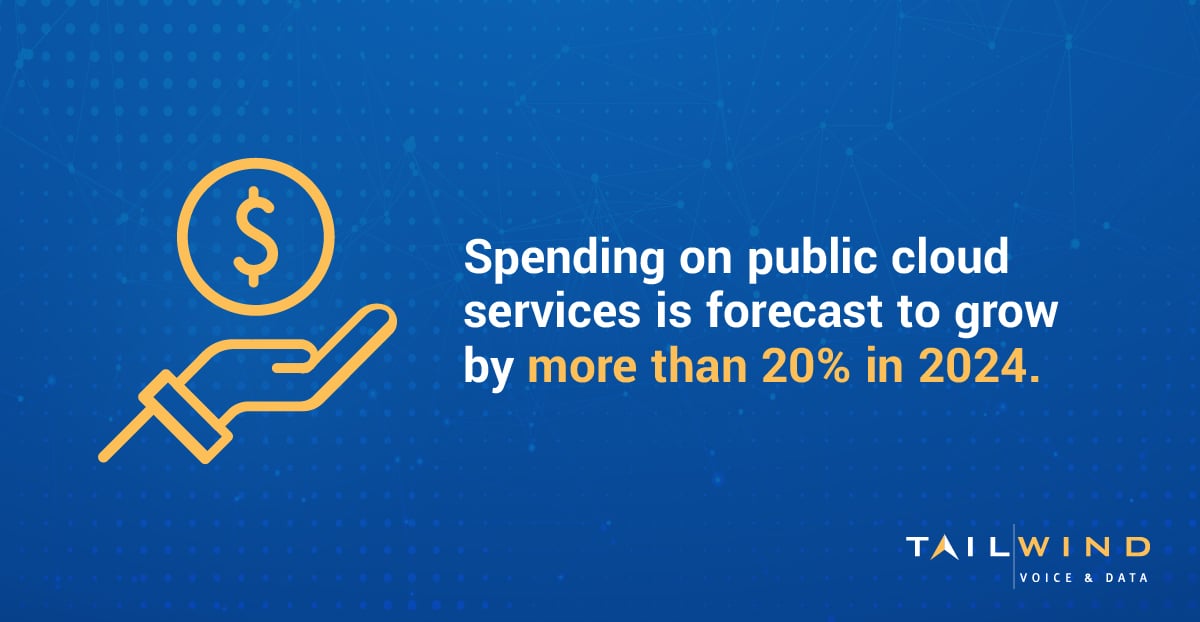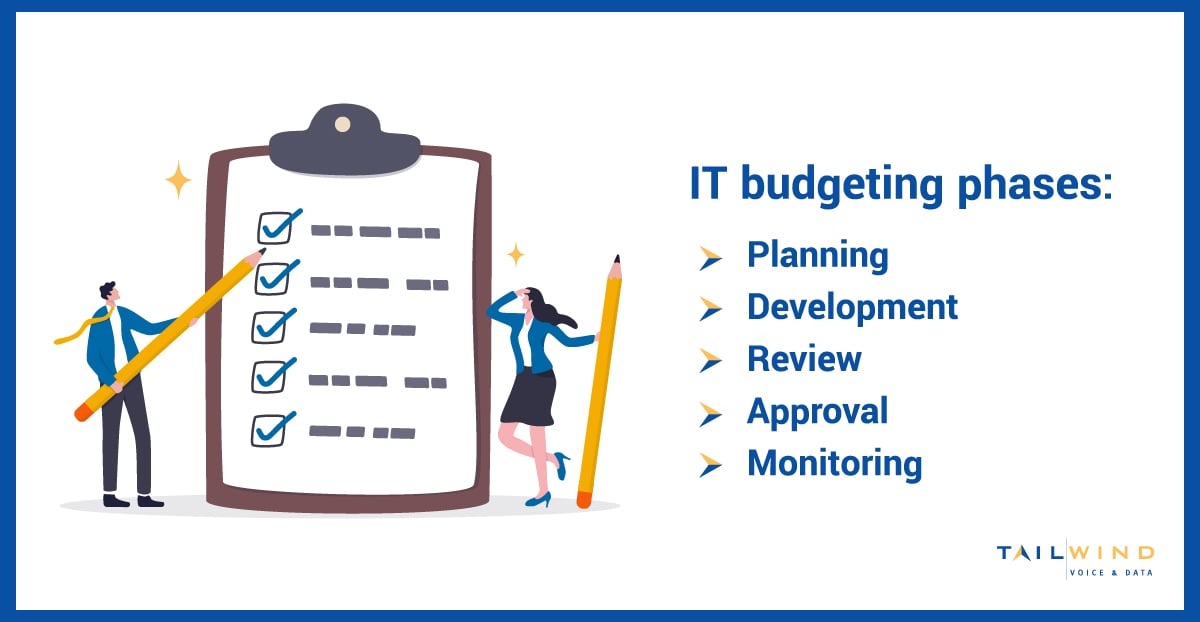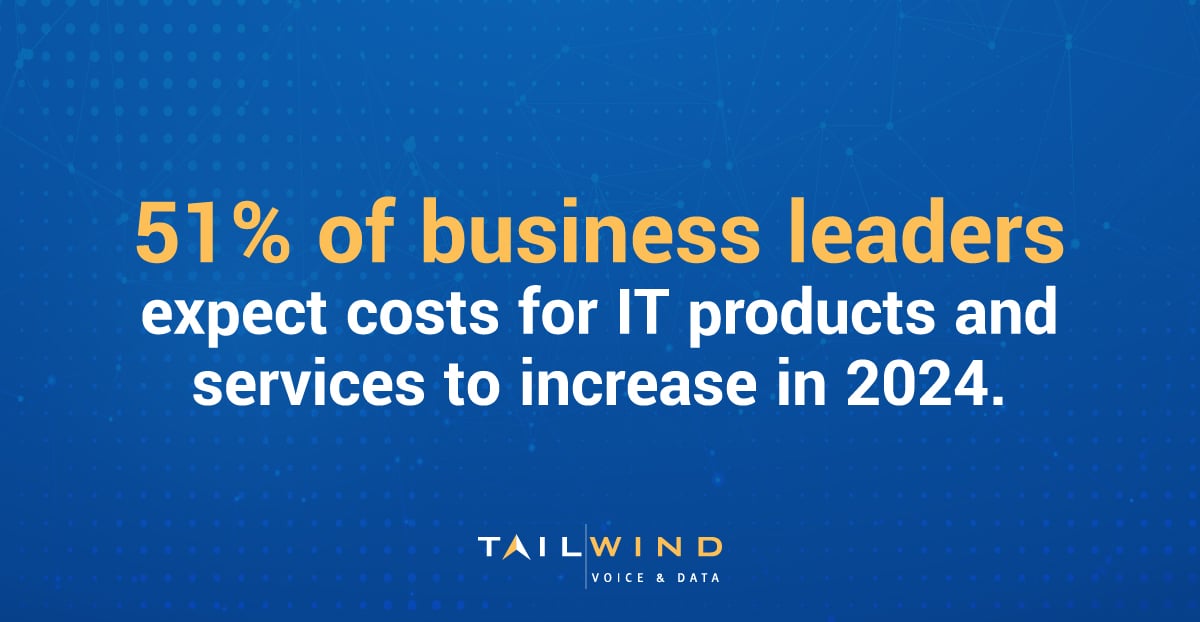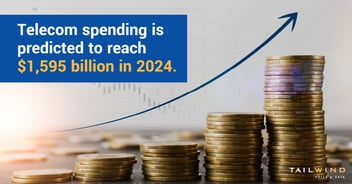For many IT leaders, annual budget planning can feel like gazing into a crystal ball. Building a realistic technology investment strategy over the next 12 months requires predicting the unpredictable, from potential cyber threats to economic shifts and emerging innovations. But without a thoughtful approach grounded in strategy, IT budgets risk becoming bloated wish lists – or they fail to execute on enterprise priorities.
With 66% of businesses planning to increase their IT budgets in 2024,1 building an effective IT budget is essential to ensuring your technology expenses align with enterprise strategies. In this blog, we'll explain why IT budgeting is important for enterprise businesses, the components of an IT budget, and best practices to help you start the year with an accurate budget.
What Is IT Budgeting?
IT budgeting is one of the most critical processes IT professionals undertake every year. At its core, IT budgeting involves allocating financial resources to the various programs, projects, software, hardware, and staffing needed to execute an organization's IT strategy over the following 12 months.
A well-constructed IT budget aligns spending with strategic objectives and allows you to course-correct quickly as operational conditions change. When done correctly, IT budgets can translate your high-level business strategy into accurate financial decisions across categories like IT infrastructure, cyber security, software, services, training, and more.
IT Budget Components
Your IT budget encompasses the investments needed to deliver and support enterprise technology across an organization. Here's what should be included in a typical IT budget:
Compensation Costs
An IT budget covers compensation costs for IT staff, including analysts, developers, architects, technicians, and IT leadership roles. Expenses for external consultants engaged by the IT department also typically fall under this budget. Having adequate funding for the right mix of internal and contracted skills is critical for execution.
Enterprise Platforms & Applications
Major enterprise-wide systems used across departments rely on the IT budget for funding. This typically includes platforms like ERP, CRM, and other critical applications. The infrastructure, maintenance, and operations of these shared systems are IT budget responsibilities.
Software Licenses
Software licensing is a central IT budget element, from operating systems and office productivity suites to databases, analytics tools, and application development environments. Funding is needed for initial software license purchases, ongoing access fees, and maintenance plans.
Hardware
Hardware expenditures support business systems and users organization-wide, from laptops and mobile devices to servers, networking equipment, and data centers. Since your company's technology infrastructure underpins technology reliability and security, having an adequate budget here is vital.
Cloud Infrastructure
Analysts predict spending on public cloud services to grow by over 20% in 2024,2 with more enterprises leveraging cloud computing platforms like AWS, Azure, and Google Cloud instead of – or alongside – on-premises infrastructure. These cloud service expenses typically fall under the IT budget and can shift technology spending from capital to operating budgets, which requires planning.
Specialized Business Unit Systems
While central systems fall under IT, specialized applications used exclusively by business units are often covered directly by those departments. For example, the marketing department will typically fund specific marketing automation, social media, and content management platforms from their budgets. However, integration and security for these solutions still rely on core IT systems and support.

Benefits of IT Budgeting
An effective IT budget can help your business achieve a number of important outcomes, such as:
- Strategic Alignment - All IT budget items should link back to an important goal or initiative within your overall IT strategy and roadmap, which helps ensure your teams have enough funding for executing high-priority projects critical to future success.
- Budget Management - Budgeting gives your teams the context and visibility needed to track and manage technology investments on an ongoing basis for simplified IT budget management.
- Stakeholder Buy-In - Continuous collaboration during budget planning and tying technology value to dollars can help your business leadership understand how technology investments map to your organization's needs and priorities.
- Informed Tradeoffs - With clarity into the purpose of each investment, leadership can intelligently balance cost constraints with delivery requirements when cuts are mandated.
- IT Responsiveness - Discretionary funding empowers IT teams to respond quickly to urgent, unforeseen requests. When reserved upfront, this budget can be deployed to address new needs without delays.
- Benchmark Awareness - Visibility into peer spending levels and ratios allows insightful comparison to evolve maturity. Your CFO and other executives can identify gaps in budget breakdowns by function versus industry benchmarks.
- Continuous Improvement - Regular assessment of IT budget components against metrics like utilization, performance, and changing business priorities can help you find areas to reduce costs and optimize expenditure.

What Is the IT Budgeting Process?
While the end goal of IT budgeting is an approved budget, getting there involves a multi-step process that typically spans several months. Understanding the phases of the IT budgeting process allows your teams to plan, coordinate, and manage this critical activity effectively. Each organization handles steps like final approval and timeline specifics a bit differently, but the following framework covers the typical process.
Budget Planning
IT budget kickoff starts with assessing current investments across spending categories, from your IT department staff to software purchases and more. Building in funding to execute strategic priorities in your IT roadmap is vital up front, along with forecasting future needs in collaboration with business partners.
Development
With your technology needs framed up, you can form specific budget numbers by leveraging historical data, maintenance contracts, market rates, and other factors. Multiple drafts may be required to refine the rationale and accuracy behind each proposed investment figure.
Review
Before submitting for official approval, the initial IT budget should be reviewed at the departmental level with key peers like the CFO. Gaps, overages, and inconsistencies in expenditure can be addressed at this stage through further prioritization and tradeoff discussions.
Approval
Depending on the size of your organization and the investments involved, final IT budgets may need sign-off by department heads, division leadership, executive committees, or even the full Board. Justification is vital throughout the process, but especially at the final approval stage.
Monitoring
Once approved, conducting regular budget check-ins can help you identify early opportunities for adjustments, problem areas, and new goals that justify the reallocation of discretionary dollars.
IT Budget Planning Best Practices
The key to success when creating an information technology budget is to approach the process strategically and methodically. Here are some best practices:
- Start Early - The budgeting process should begin months in advance, not just before the final budget is due. Analyze current spending, benchmark against peers, forecast future needs, and collaborate with business leadership on requirements.
- Connect to Strategy - Every budget number should link back to business objectives to help justify spending and prevent arbitrary cuts.
- Involve Others - While led by IT, budgeting requires cross-functional input from groups like Finance, HR, and other specific business units.
- Focus on Value - Shift discussion from pure costs to value delivered per spend category when possible to enlighten stakeholders.
- Stay Flexible - 51% of business leaders expect IT product and service costs to rise in 2024.1 Allow for some discretionary funding that can be allocated to unforeseen needs or changing priorities.
- Benchmark Continuously - Regularly compare your budget breakdowns to industry peers and leaders to find improvement opportunities and areas to cut costs.

Build an Effective IT Budget With a Telecom Audit From TailWind
For enterprises managing telecom and IT expenses across multiple locations, getting a handle on actual spending can be a significant budgeting challenge. Luckily, a professional telecom audit can help you transform the chaos into a strategic plan for optimization.
TailWind's telecom audit services encompass all services and vendors enterprise-wide to provide a holistic view of exactly what IT resources your organization pays for at each site. Our auditing experts consolidate your expenses into organized reporting that highlights opportunities for improvement, including unused services, outdated solutions, and inflated vendor pricing. With this information, you can ensure strategic alignment between your technology investments and objectives when creating your IT budget.
More than 40,000 enterprise and SMB clients rely on our expertise, so you can trust TailWind to deliver visibility into each branch and a better understanding of what you’re spending to help save on costs. Ready to kick off your 2024 IT budgeting on the right foot? Reach out to TailWind to book your telecom audit today.
Sources:


